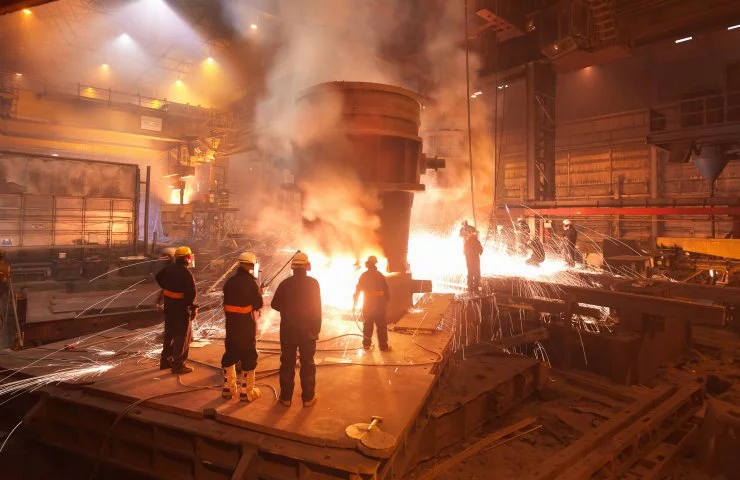Rolled metal is a whole group of similar types of products produced by the metallurgical industry. Products are made of pure metal, steel and other alloys. Metal rolling takes place in several stages.
Pig iron production
The process begins with loading sinter, pellets and coke into a blast furnace with a continuous supply of warm air and natural gas. The molten cast iron flows down to the bottom of the furnace. Slag accumulated on the surface impedes oxidation processes. Cast iron is produced through special holes. While the cast iron is being smelted, they are covered with clay mortar.
Steel production
Occurs in oxygen converters, where liquid pig iron is placed from a blast furnace in a refractory lined container (ladle). Steel scrap is added to the cast iron melt. From above, high-purity oxygen enters the converter at supersonic speed through a lance suspended above the bath. This blowing oxidizes the molten mass and removes silicon, carbon, phosphorus and manganese.
Steel casting
Finished steel is processed in a casting ladle. The following operations are performed:
- desulfurization,
- alloying,
- deoxidation,
- argon blending purge.
Purpose: to evenly distribute the chemical elements of steel throughout the bucket. At the request of customers, steel is treated with calcium-containing reagents or a circulating vacuum unit. Steel is cast continuously using special installations into slabs with a thickness of 200 - 250 mm, width - from 950 to 1850 mm. Ingots of high quality are obtained. Finished slabs are further processed.
Types of rolled metal
The following conditions affect the type of rolled metal: 1. Production feature:
- hot rolling. The metal is heated in slabs to 1250 ° C, rolled on a mill in 2000. The metal is obtained with a thickness of 1.5-16 mm. Part goes to finishing, part is prepared for cutting or shipment, the rest is sent for further processing;
- cold rolling involves processing at a temperature below recrystallization. The scale is removed from the surface by means of acid etching. The strip is then rolled to final thickness and fired to obtain the desired magnetic, mechanical and electrical properties. If necessary, the strips are cut to length, packed and sent to the client.
2. Alloy used:
- black - carbon steel;
- non-ferrous - aluminum, copper, titanium, nickel, cadmium, tin and other metals;
- stainless - based on stainless steel, plus alloy metals such as chromium, nickel, manganese and others.
In the production of rolled metal from ferrous metal, before the cold rolling operation, the scale is removed from the surface. Typically, this operation is performed by chemical etching using an acid. The metal strip is then rolled to its final dimensions and annealed. The annealed cold rolled strip is galvanized to enhance corrosion resistance. Galvanized sheet is the main material for the automotive industry, in the production of household appliances and construction.





